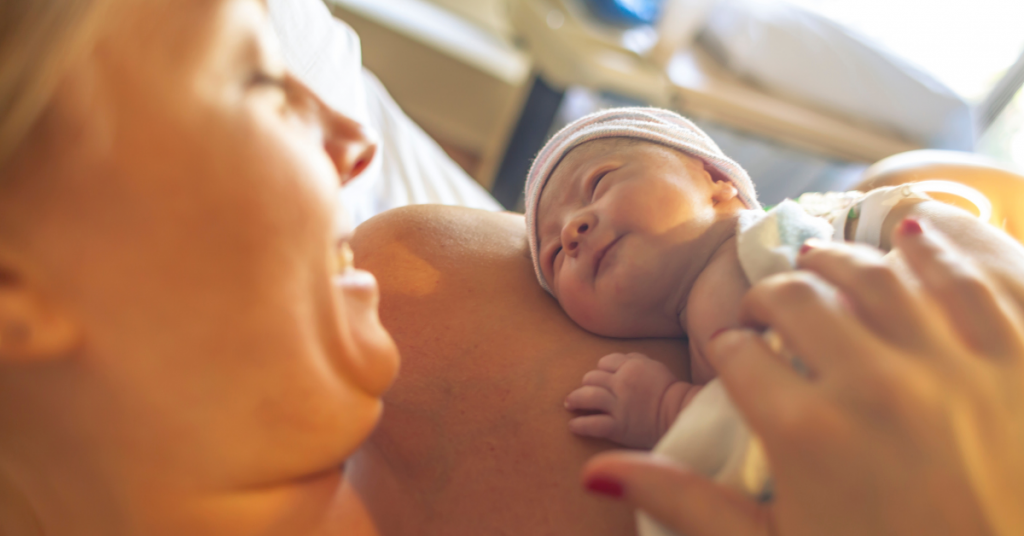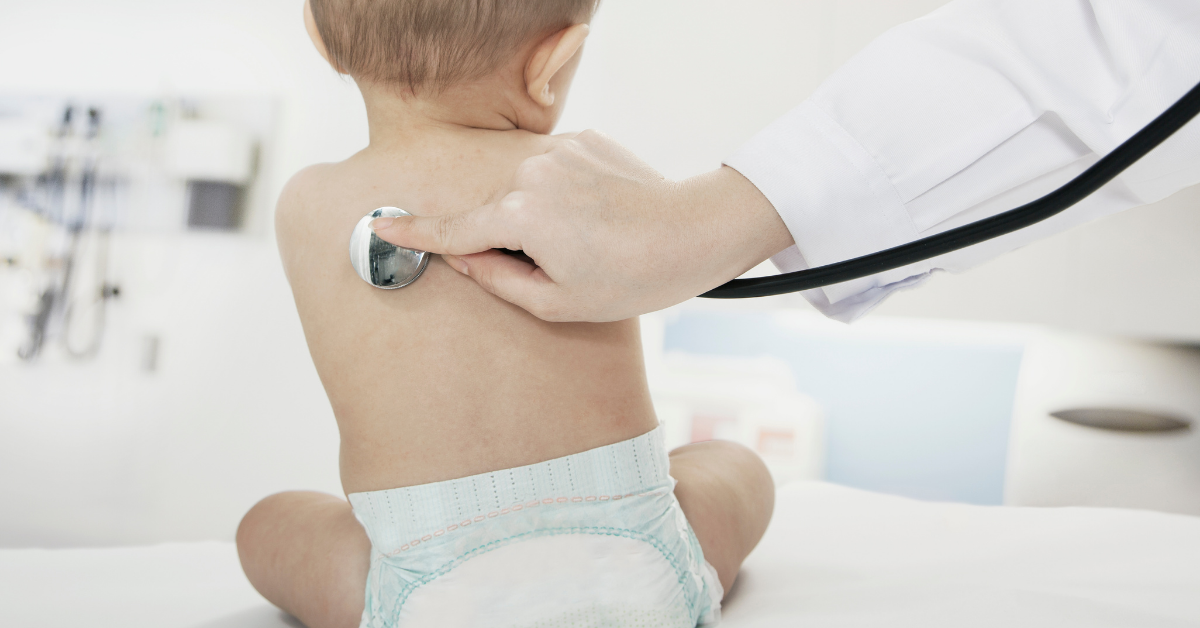
Author: Adam Kirton, MD, University of Calgary/Alberta Children’s Hospital
Reviewed: April 2021
SUMMARY
Sometimes, blood vessels in the brain get blocked or broken. Stroke is the resulting brain damage. Perinatal stroke is stroke in a fetus or newborn. It is a common cause of cerebral palsy and other disabilities. Diagnosis of this condition requires brain imaging.
There are different types of perinatal stroke. Each has different causes. However, many of these causes are only partially understood.
Most children who experience perinatal stroke have long-term neurological problems. They may require treatment for physical, developmental, and psychosocial complications.
JUMP TO
Disorder Overview
DESCRIPTION AND DEFINITIONS
All perinatal strokes are related to localized injuries in the brain’s blood vessels. They can occur any time during the neonatal period. The neonatal period lasts from the middle of pregnancy to the first month after birth. There are several specific perinatal stroke diseases. These are defined in two ways. The first is by how the brain’s blood vessels are affected. The second is by when the child first shows symptoms.
Arterial Ischemic Stroke (AIS)
Arterial ischemic stroke is the most common type of perinatal stroke. AIS occurs when an artery is blocked by a blood clot.
Arteries are the blood vessels that carry blood to the brain. Two pairs of arteries carry blood in the neck. The first pair are located at the front of the neck. They are called the carotid arteries. The second pair are located at the back of the neck. They are called the vertebral arteries.
After reaching the brain, these arteries connect in a circle. This circle is called the Circle of Willis. From there, the arteries spread out like tree branches. The largest branch is the middle cerebral artery. A lack of blood flow in these branches can lead to brain damage within minutes. This lack of blood flow is known as ischemia.
Cerebral Sinovenous Thrombosis (CSVT)
Veins carry blood from the brain back to the heart. The largest veins in the brain are called sinuses. In cerebral sinovenous thrombosis, a blood clot occurs in the veins or sinuses. This blocks the drainage of blood from the brain. It may also lead to brain damage, or stroke.
Periventricular Venous Infarction (PVI)
Hemorrhagic Stroke (HS)
Brain conditions unique to premature babies and not further discussed in this entry include:
- Intraventricular Hemorrhage. Bleeding into cavities in the brain called ventricles. The blood vessels are fragile in preterm babies.
- Hypoxic-ischemic Encephalopathy. Lack of blood flow and oxygen to the entire brain.
SYMPTOMS AND PHYSICAL SIGNS
Perinatal stroke usually presents in one of two ways.
1. Signs may be recognized in the first hours or days of life. Seizures are the most common sign of perinatal stroke. However, a baby may also be lethargic or have breathing problems. AIS, CSVT and HS in neonates can all present this way.
This is called an “acute symptomatic neonatal stroke.” Unlike older children and adults, most neonates do not show a sudden onset of symptoms.
2. Signs may be recognized later in childhood. Sometimes, stroke occurs well before birth or does not result in seizures. In these cases, the first sign of stroke may be early hand preference or another motor–development asymmetry. Parents often notice these signs when a baby is about 6 months old. PVI always presents this way. AIS often does, too.
In these cases, the exact timing of when the stroke happened may be difficult to estimate. For this reason, this presentation is termed a “presumed prenatal stroke.”

RISK FACTORS AND CAUSATION
It is difficult to prove a definite cause for most perinatal stroke. Perinatal strokes cannot be prevented. There is nothing a mother can do to prevent perinatal stroke in a child. It is not the mother’s fault. The most likely cause depends on the type of perinatal stroke.
Arterial Ischemic Stroke (AIS)
- Blood clots. Most perinatal AIS occurs when a blood clot forms in the placenta. The clot can then enter circulation in the fetus. It can travel to the brain and block an artery.
- Serious bacterial infection. Certain infections can directly cause artery inflammation with subsequent problems. Bacterial meningitis is an example.
- Congenital heart disease. Abnormal heart development can increase the risk of stroke. So can the surgical procedures used to treat it.
Cerebral Sinovenous Thrombosis (CSVT)
- Dehydration. Babies can become dehydrated very quickly. Poor feeding may be one of the causes of dehydration. It is easily missed, even with experienced mothers and fathers.
- Infections. Infections that cause perinatal CSVT include bacterial meningitis
- Blood clotting disorders. These disorders are also known as thrombophilia. They are also a cause to consider.
Periventricular Venous Infarction (PVI)
Hemorrhagic Stroke (HS)
- Abnormal blood vessels. Bleeding may relate to the rupture of an abnormal blood vessel in the brain.
- Blood clotting disorders. These disorders are also known as thrombophilia.
- Note: The “trauma” of labor and delivery is almost never responsible for neonatal hemorrhagic stroke.
DIAGNOSIS: BRAIN IMAGING
Diagnosing perinatal stroke requires brain imaging. Ultrasounds or computer assisted tomography scans (CT scans) can detect acute stroke in newborns. However, magnetic resonance imaging (MRI) is the best test. MRIs can confirm all perinatal stroke types.
MRI technology can also provide helpful images of the arteries and veins. MR angiography (MRA) can produce images of arteries. MR venography (MRV) can produce images of veins.

Figure. Neuroimaging in perinatal stroke.
(A) MRI shows a recent arterial stroke (bright area) in a newborn. (B) A picture of the veins shows blood clots in a newborn with CSVT. (C) MRI shows recent bleeding (black area) into the brain in a newborn. This represents hemorrhagic stroke.
Sometimes signs of stroke appear later in infancy. In these cases, MRIs can show older AIS (D) or the unique pattern of PVI (E).
LABORATORY TESTS
Neuroimaging can confirm a stroke diagnosis. However, laboratory tests can help determine possible risk factors.
These tests can include:
- Echocardiogram (ECHO). ECHOs create an ultrasound picture of the heart.
- Electrocardiogram (ECG). ECGs trace the heart’s rhythm.
- Electroencephalogram (EEG). EEGs test brain activity. They may be useful in evaluating seizure-related complications of stroke.
- Blood clotting tests. These quick tests can exclude bleeding or clotting disorders.
- Lumbar punctures. Lumbar punctures test for infection or inflammation. They are also called “spinal taps.”
THERAPEUTIC INTERVENTIONS
It is possible to open blocked blood vessels in adult stroke. This can be done with medications or procedures. However, there are no easy ways to open blocked blood vessels in perinatal stroke patients.
Instead, acute treatment of neonatal stroke focuses on protecting the freshly injured brain. Neuroprotection may include:
- recognizing and treating seizures
- avoiding increased body temperature
- treating infection
- optimizing brain blood flow with good blood pressure
- correcting dehydration
- maintaining normal blood sugar levels
Specific medicines may also be considered. These include:
- Antibiotics. Antibiotics are used in neonatal strokes related to infection.
- Blood thinners. Blood thinners are used for CSVT or strokes related to heart disease.
Educating and counseling parents immediately after diagnosis is very important. A mother cannot prevent perinatal strokes. This must be emphasized. Education and counseling can reduce misplaced feelings of guilt. They can help with mental health consequences.

OUTCOMES AND CHRONIC MANAGEMENT
Outcomes from perinatal stroke vary. Many factors determine outcome. Yet only some of these factors are understood. It is challenging to accurately predict the outcome of perinatal stroke.
Potential complications of perinatal stroke (and how to manage them) include:
- Hemiparesis. Weakness on one side of the body is a common complication. Hemiparesis may also be known as hemiparetic or unilateral cerebral palsy. Pediatric occupational therapy and physical therapy during childhood development can help.
- Epilepsy. Recurrent seizures may occur during childhood. This is called epilepsy. Epilepsy can often be managed with medications.
- Cognition and learning. Some children may experience differences in cognition and learning due to perinatal stroke. A neuropsychologist may be able to help. Working with teachers and education experts can, too.
- Language disorders. Language disorders include difficulty speaking or understanding language. They are relatively uncommon after perinatal stroke. However, a speech-language pathologist can help.
- Vision. Difficulties with vision or eye movement may occur with perinatal stroke. However, these vision difficulties are not usually disabling.
- Family mental health. After perinatal stroke, families must be screened for depression, anxiety, and other mental health complications. Family-centered care and peer support may be beneficial.
STROKE PREVENTION
Perinatal strokes have a very low risk of recurrence. Medication or other stroke prevention strategies are rarely required.
Resources
ORGANIZATIONS/GROUPS
Fight the Stroke Foundation (Based in Italy)
FightTheStroke exists to answer the need for knowledge and support for families impacted by the management of a young stroke survivor and with a disability of Cerebral Palsy; to educate to the awareness that children, even those not yet born, can be affected by stroke; to inspire the new generations and encourage research and adoption of innovative therapies. Although based in Italy, FightTheStroke actively collaborates internationally on scientific and social innovation.
Pediatric Stroke Parent Support Group (Aurora, Colorado)
The Pediatric Stroke Parent Support Group is a monthly meeting for families of stroke survivors. This community provides support, education, and advocacy for families impacted by the range of outcomes of all types of pediatric strokes. Normally the group meets in person on the second Tuesday of the month. However, due to COVID-19, the group has been meeting online via Zoom. Anyone is welcome to join the online meetings. Please check the website for up-to-date meeting information. Connect via Facebook or email: [email protected]
Pediatric Epilepsy Surgery Alliance
The Pediatric Epilepsy Surgery Alliance (formerly known as The Brain Recovery Project) enhances the lives of children who need neurosurgery to treat medication-resistant epilepsy. They empower families with research, support services, and impactful programs before, during, and after surgery. PESA’s programs include research-based, reliable information to help parents and caregivers understand when a child’s seizures are drug-resistant; the risks and dangers of seizures; the pros and cons of the various neurosurgeries to treat epilepsy; the medical, cognitive, and behavioral challenges a child may have throughout life; school, financial aid, and life care issues. PESA’s resources include a comprehensive website with downloadable guides, pre-recorded webinars, and virtual workshops; an informative YouTube channel with comprehensive information about epilepsy surgery and its effects; a private Facebook group (Education After Pediatric Epilepsy Surgery) with over 300 members; Power Hour (bi-monthly open forums and live virtual workshops on various topics); and free school training to help your child’s education team understand the impact of their epilepsy surgery in school. Their Peer Support Program will connect you with a parent who has been there. The Pediatric Epilepsy Surgery Alliance also hosts biennial family conferences and regional events that allow families to learn from experts, connect with other families, and form lifelong friendships. They also provide a travel scholarship of up to $1,000 to families in need to fund travel to a level 4 epilepsy center for a surgical evaluation.
In addition, PESA has resources for medical professionals to assist in helping clinicians help the parents of their patients find the resources they need after surgery. Educators and therapists will also find helpful resources and information, including videos, guides, and relevant research. Patients who have undergone surgery are encouraged to register with the Global Pediatric Epilepsy Surgery Registry to help set future research priorities.

Little Stroke Warriors Australia (Facebook community group)
Little Stroke Warriors Australia is a group of families and survivors of paediatric stroke. It provides families and caregivers with a supportive community to help steer them through the journey of stroke recovery. Little Stroke Warriors also raises awareness of paediatric stroke throughout Australia, to make sure all paediatric stroke survivors get the treatment and care they need, and that their families are well supported.
Little Stroke Warriors also hosts a private Facebook group that anyone worldwide can join: Little Stroke Warriors Support Group.
KISS Pediatric Stroke Support Group (Facebook private group)
KISS Pediatric Stroke Support Group is a safe space offering not just support to the parents and caregivers navigating the often overwhelming journey of life after pediatric stroke, but it’s also a place to ensure that all stroke families are up to date on the most cutting-edge information pertaining to pediatric stroke: research, educational tools, and advocacy campaigns to support and rally for our children both in our local communities and worldwide.
International Alliance for Pediatric Stroke
The International Alliance for Pediatric Stroke (IAPS) is dedicated to building awareness, expanding education, providing support, and advancing research on behalf of children and their families, leading to a timely diagnosis, treatment, and prevention of pediatric stroke. The website contains vetted, useful information, the IAPS Support Network, resources, stories, and much more.
International Pediatric Stroke Organization
The mission of the International Pediatric Stroke Organization (IPSO) is to improve the lives of children with cerebrovascular disease worldwide through research, education, clinical care and advocacy. IPSO’s vision is a world in which international, multidisciplinary collaborations advance the understanding, care, and outcomes of childhood cerebrovascular disease.

PUBLICATIONS
Our Family’s Stroke Journey (2020)
Downloadable family guide from the Stroke Foundation in Australia which addresses:
What is a stroke? How can stroke affect my child? What treatment and care will my child receive? What do I need to know about life after my child’s stroke? What help is available?
JCN: NICU Series- Interview with a Parent and the Brain Recovery Project: Childhood Epilepsy Foundation
Podcast from SAGE Neuroscience and Neurology/Journal of Child Neurology (JCN). Dr. Sonika Agarwal of Children’s Hospital of Philadelphia talks to Audrey Vernick about her experience with pediatric epilepsy, perinatal stroke, and infantile spasms from a parent’s perspective. Brain Recovery Project website.
JCN: Interview with Mary Kay Ballasiotes, pediatric stroke advocate
Podcast from SAGE Neuroscience and Neurology/Journal of Child Neurology (JCN). Dr. Sonika Agarwal of Children’s Hospital of Philadelphia interviews Mary Kay Ballasiotes, pediatric stroke advocate and parent of a child with cerebral palsy from a stroke at birth. Learn more at the International Alliance for Pediatric Stroke.
JCN: NICU Series- Prenatal brain hemorrhage
Podcast from SAGE Neuroscience and Neurology/Journal of Child Neurology (JCN). Dr. Sonika Agarwal of Children’s Hospital of Philadelphia talks about prenatal brain hemorrhage.
Pediatric Stroke Family Tool Kit
The International Alliance for Pediatric Stroke has published the Pediatric Stroke Family Tool Kit, a must-have guide for anyone who has a baby, child, or teen who has had a stroke. The Tool Kit is available online to download, flip through, and printed copies are also available at no cost.
Fact Sheet
Fact sheet created in partnership between International Alliance for Pediatric Stroke and the American Stroke Association. Appropriate for sharing in the community, on social media, schools, physicians’ offices. Printed copies are available through contacting IAPS at [email protected].
Child Neurology Foundation (CNF) solicits resources from the community to be included on this webpage through an application process. CNF reserves the right to remove entities at any time if information is deemed inappropriate or inconsistent with the mission, vision, and values of CNF.
Research
ClincalTrials.gov for Perinatal Stroke are clinical trials that are recruiting or will be recruiting. Updates are made daily, so you are encouraged to check back frequently.
ClinicalTrials.gov is a database of privately and publicly funded clinical studies conducted around the world. This is a resource provided by the U.S. National Library of Medicine (NLM), which is an institute within the National Institutes of Health (NIH). Listing a study does not mean it has been evaluated by the U.S. Federal Government. Please read the NLM disclaimer for details.
Before participating in a study, you are encouraged to talk to your health care provider and learn about the risks and potential benefits.
Family Stories
Meet over 70 babies, children, and teens from all over the world who have been impacted by stroke. Pediatric Stroke Stories from International Alliance for Pediatric Stroke
Writer Lisa Applegate shares a mother’s perspective of raising a son who suffered a perinatal stroke in Parents Magazine. July 2010.
The information in the CNF Child Neurology Disorder Directory is not intended to provide diagnosis, treatment, or medical advice and should not be considered a substitute for advice from a healthcare professional. Content provided is for informational purposes only. CNF is not responsible for actions taken based on the information included on this webpage. Please consult with a physician or other healthcare professional regarding any medical or health related diagnosis or treatment options.
References
Reviews and Guidelines:
Dunbar M, Kirton A. Perinatal stroke: Mechanisms, management, and outcomes of early cerebrovascular brain injury. The Lancet Child & Adolescent Health. 2018 Sep;2(9):666–76. http://doi.org/10.1016/S2352-4642(18)30173-1
Ferriero DM, Fullerton HJ, Bernard TJ, Billinghurst L, Daniels SR, DeBaun MR, et al. Management of stroke in neonates and children: A scientific statement from the American Heart Association/American Stroke Association. Stroke. 2019 Mar;50(3). http://doi.org/10.1161/STR.0000000000000183
Ichord R. Cerebral sinovenous thrombosis. Frontiers in Pediatrics. 2017;5. http://doi.org/10.3389/fped.2017.00163
Kirton A, deVeber G. Paediatric stroke: Pressing issues and promising directions. The Lancet Neurology. 2015 Jan;14(1):92–102. http://doi.org/10.1016/S1474-4422(14)70227-3
Monagle P, Chan AKC, Goldenberg NA, Ichord RN, Journeycake JM, Nowak-Göttl U, et al. Antithrombotic therapy in neonates and children. Chest. 2012 Feb;141(2):e737S-e801S. http://doi.org/10.1378/chest.11-2308
Sinclair AJ, Fox CK, Ichord RN, Almond CS, Bernard TJ, Beslow LA, et al. Stroke in children with cardiac disease: Report from the international pediatric stroke study group symposium. Pediatric neurology. 2015 Jan;52(1):5–15. http://doi.org/10.1016/j.pediatrneurol.2014.09.016


